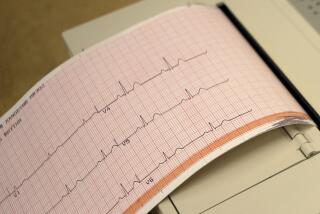Get PET and MRI scans at the same time -- FDA says it’s OK
Score one for efficiency, or potential efficiency. The FDA has approved a machine that performs -- at the same time -- both an MRI and a PET scan, two procedures doctors use to peer into the body.
The agency gave approval for the two-in-one diagnostic tool, made by Siemens, on Friday.
In a PET (positron emission tomography) scan, patients are injected with a radioactive chemical that is absorbed by organs and tissues in the body. The scanner then records the energy given off as the chemical decays, producing a 3-D image. Such a scan reveals changes at the cellular level, rather than structural, making it useful for detecting such problems as heart damage and early cancer. Physicians already can use combined PET and CT (computerized tomography) scans, the FDA announcement notes, but the latter involves X-rays and thus the potential to damage DNA.
MRI (magnetic resonance imaging) uses magnetic fields and radio waves to take pictures of the body -- without ionizing radiation.
Such a diagnostic tool can prove especially useful for children, who are more sensitive to radiation, or for patients who need multiple scans, the agency noted. Further, patients who need both PET and MRI scans wouldn’t have to be moved into different machines.
An editorial from MedicalPhysicsWeb, published several years ago when combined MRI and PET scanners were still largely theoretical, questioned whether such a diagnostic machine would catch on. Joe McEntee at the Institute of Physics Publishing wrote in 2007:
“Technology issues notwithstanding, an even more fundamental consideration is the clinical potential (or otherwise) of PET/MRI. Put another way: will anybody outside the research lab want the scanners? It’s a racing certainty that a combined PET/MRI product will come with a heavyweight price tag. As such, the clinical community will need to be doubly convinced that the combined modalities will make a significant, positive difference to patient management.”
As with any new technology—time will tell.
RELATED: More news from HealthKey
More to Read
Sign up for The Wild
We’ll help you find the best places to hike, bike and run, as well as the perfect silent spots for meditation and yoga.
You may occasionally receive promotional content from the Los Angeles Times.










